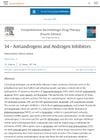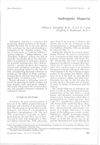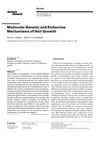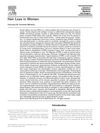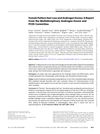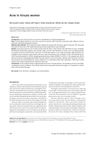Hormonal Diagnosis of So-Called Androgenetic Alopecia in Women
April 1988
in “
Geburtshilfe und Frauenheilkunde
”
TLDR Treatment balancing hormones stopped hair loss in most women with androgenetic alopecia.
The study investigated androgenetic alopecia (a. A.) in 125 women aged 18 to 68, revealing that up to 79% experienced varying degrees of hair loss. Despite the condition being linked to prolonged androgen excess, hyperandrogenemia was often undetectable. The study found that 67.2% of patients had two or more abnormal hormonal parameters, with significant correlations between androgen, prolactin, and TSH levels and bleeding anomalies and ferritin deficiency. Treatment aimed at restoring estrogen-androgen balance using low-dose antiandrogens, estrogens, and other medications resulted in halted hair loss in 74 out of 104 women and hair regrowth in 16, though 14 showed no response.

